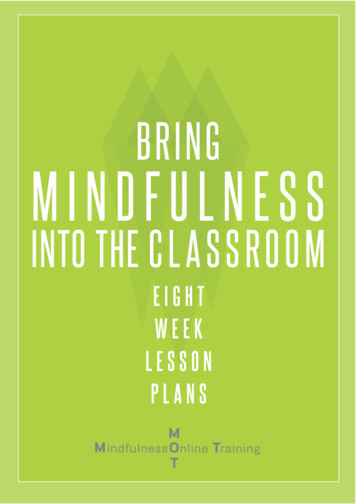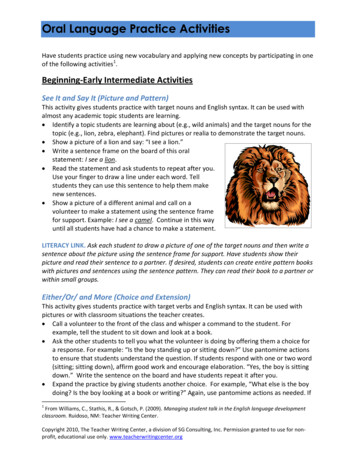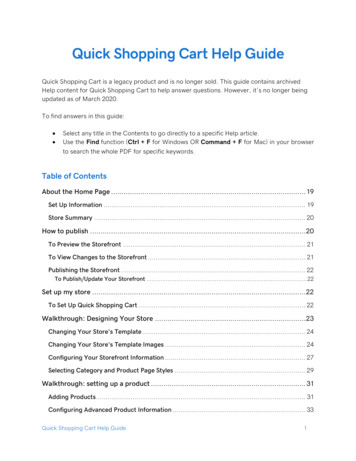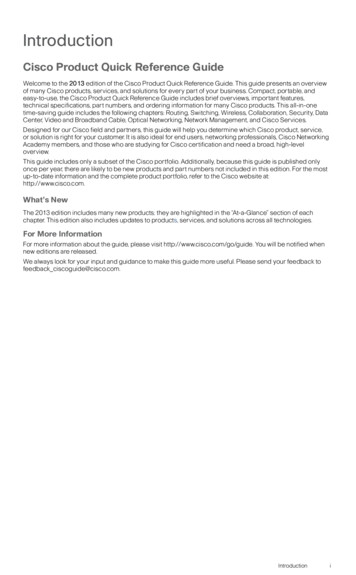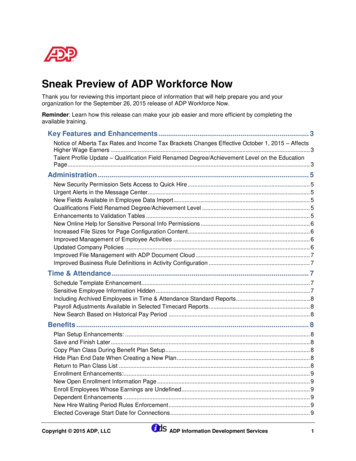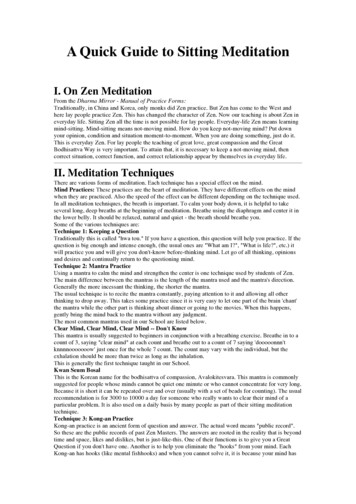
Transcription
A Quick Guide to Sitting MeditationI. On Zen MeditationFrom the Dharma Mirror - Manual of Practice Forms:Traditionally, in China and Korea, only monks did Zen practice. But Zen has come to the West andhere lay people practice Zen. This has changed the character of Zen. Now our teaching is about Zen ineveryday life. Sitting Zen all the time is not possible for lay people. Everyday-life Zen means learningmind-sitting. Mind-sitting means not-moving mind. How do you keep not-moving mind? Put downyour opinion, condition and situation moment-to-moment. When you are doing something, just do it.This is everyday Zen. For lay people the teaching of great love, great compassion and the GreatBodhisattva Way is very important. To attain that, it is necessary to keep a not-moving mind, thencorrect situation, correct function, and correct relationship appear by themselves in everyday life.II. Meditation TechniquesThere are various forms of meditation. Each technique has a special effect on the mind.Mind Practices: These practices are the heart of meditation. They have different effects on the mindwhen they are practiced. Also the speed of the effect can be different depending on the technique used.In all meditation techniques, the breath is important. To calm your body down, it is helpful to takeseveral long, deep breaths at the beginning of meditation. Breathe using the diaphragm and center it inthe lower belly. It should be relaxed, natural and quiet - the breath should breathe you.Some of the various techniques are:Technique 1: Keeping a QuestionTraditionally this is called "hwa tou." If you have a question, this question will help you practice. If thequestion is big enough and intense enough, (the usual ones are "What am I?", "What is life?", etc.) itwill practice you and will give you don't-know before-thinking mind. Let go of all thinking, opinionsand desires and continually return to the questioning mind.Technique 2: Mantra PracticeUsing a mantra to calm the mind and strengthen the center is one technique used by students of Zen.The main difference between the mantras is the length of the mantra used and the mantra's direction.Generally the more incessant the thinking, the shorter the mantra.The usual technique is to recite the mantra constantly, paying attention to it and allowing all otherthinking to drop away. This takes some practice since it is very easy to let one part of the brain 'chant'the mantra while the other part is thinking about dinner or going to the movies. When this happens,gently bring the mind back to the mantra without any judgment.The most common mantras used in our School are listed below.Clear Mind, Clear Mind, Clear Mind -- Don't KnowThis mantra is usually suggested to beginners in conjunction with a breathing exercise. Breathe in to acount of 3, saying "clear mind" at each count and breathe out to a count of 7 saying 'dooooonnn'tknnnnooooooow' just once for the whole 7 count. The count may vary with the individual, but theexhalation should be more than twice as long as the inhalation.This is generally the first technique taught in our School.Kwan Seum BosalThis is the Korean name for the bodhisattva of compassion, Avalokitesvara. This mantra is commonlysuggested for people whose minds cannot be quiet one minute or who cannot concentrate for very long.Because it is short it can be repeated over and over (usually with a set of beads for counting). The usualrecommendation is for 3000 to 10000 a day for someone who really wants to clear their mind of aparticular problem. It is also used on a daily basis by many people as part of their sitting meditationtechnique.Technique 3: Kong-an PracticeKong-an practice is an ancient form of question and answer. The actual word means "public record".So these are the public records of past Zen Masters. The answers are rooted in the reality that is beyondtime and space, likes and dislikes, but is just-like-this. One of their functions is to give you a GreatQuestion if you don't have one. Another is to help you eliminate the "hooks" from your mind. EachKong-an has hooks (like mental fishhooks) and when you cannot solve it, it is because your mind has
gotten caught on one of the hooks of the Kong-an. Sitting with the Kong-an as a question is one of thetrademarks of Zen Practice.Technique 4: Counting the BreathsThe breath is counted either on the exhalation (best for beginners) or the inhalation (more difficult)from 1 to 10. When you lose count or reach 10, start over.Technique 5: Clear Mind MeditationThis form of meditation involves just sitting and being aware of what is going on at just this moment.This is moment-to-moment mind. It hears the birds in the trees, the cars going by, the planes overhead,and the children playing outside. To the clear mind there is no such thing as 'noisy', it all just 'is'. Thisis not a beginning technique, but is an out-growth of the previous meditations.III. Sitting PosturesClick on each picture below to see an enlarged versionFrom the Dharma MirrorBasic Form:1. Place a cushion (Japanese: zafu) on a mat (Japanese: zabuton) and sit in a simple cross-leggedposition.2. Keep the spine straight, shoulders back and loose; tip your head forward slightly, tuck in yourchin so that you can see the floor about 3 feet in front of you. Your eyes should be half open,looking down.3.4. Place your hands in your lap in the Maha Mudra - see above.Basic Posture Variations:1. Full-lotus: sit with both feet upon your thighs
2.Half-lotus: sit with one foot upon the opposite thigh and with the other foot under the oppositethigh3.Quarter-lotus: sit with one foot upon the opposite calf and with the other foot under theopposite thigh
4."Burmese" posture: sit with both feet touching the mat5.Pile several cushions on top of each other, turning them sideways (widest part of cushion runsfrom the front to the back of the mat, not left to right), and straddle them. This is oftencomfortable for beginners, but is not a stable position if you have a tendency to fall asleepduring the sitting period.
6.7.8.Kneel on the mat and put a cushion on your calves and sit on it.Use a 'meditation bench' consisting of a slanted board on 2 legs. Put it over the calves as youkneel on the mat and then sit on the bench.9.10. Sitting on a chair11. Standing - in this case the proper form is to put your hands in hapchang
Common Errors: Not sitting with the backbone straight. This may be remedied by using more cushions.Generally the legs must be in a symmetrical position - what one is doing, the other must do.Most people are also more comfortable sitting with their hip joints higher than their knees. Sitting past one's physical endurance so that the mind becomes focused on the physicalposition instead of its real work.
A Quick Guide to Sitting Meditation I. On Zen Meditation From the Dharma Mirror - Manual of Practice Forms: Traditionally, in China and Korea, only monks did Zen practice. But Zen has come to the West and here lay people practice Zen. This has changed the characte

